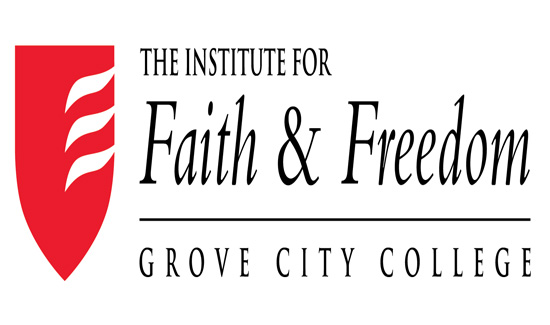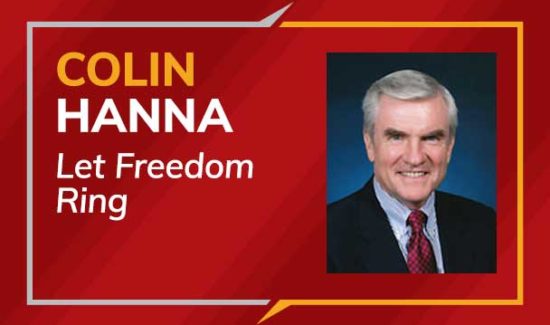What I Saw at the Rotunda: Carrying the torch for America, the beautiful
I was at the Rotunda at the U.S. Capitol on Wednesday, June 3, for the dedication of the statue to President Ronald Reagan. I was there because Bill Clark was there. Judge Clark, as readers of my material know, was Reagan’s closest and most important adviser.
Clark is 77 years old. His wife, Joan, died a few weeks ago. He was invited to the ceremony by the good folks at the Reagan Presidential Foundation. He made a rare trip to Washington, flying from San Francisco late the previous night, in a wheelchair.
Clark sat in the front row, where he was a magnet for current political luminaries and old Reaganites. They all came over to shake his hand: Peggy Noonan, Bob Michel, Denny Hastert, Michael Steele, John McCain, Chas Fagan—the sculptor of the statue. McCain made a beeline for Clark, with cameras clicking upon the two.
The ceremony began with a wonderful invocation by Rev. Barry Black, Senate chaplain, who hit the prayerful themes Reagan himself fondly invoked when waxing eloquent about America—about that Shining City on a Hill. Among those providing remarks, Congressman John Boehner and Senator Mitch McConnell—the Republican leaders in Congress—were excellent. Speaker of the House Nancy Pelosi, aside from a foolish statement on "stem cell research," was gracious in her "respect, esteem, and admiration" of President Reagan.
It was a moving event, especially with Nancy Reagan’s presence. Frail, small in size but large in stature, she was no longer the walking dartboard that "journalists" once joyously harpooned. They now treated her like an elder stateswoman, a kind of political royalty—America’s preeminent former first lady. The loudest applause was directed at Nancy.
For me, however, the crowning touch came before Nancy spoke, and before the statue unveiling. It was the sole musical selection for the program: the U.S. Army Chorus singing, a cappella, "America, the Beautiful."
This love-song for the nation captivated the room. It was beautiful. I caught a camerawoman struggling to hold up her long-lens as she wiped tears flowing down her face.
But what struck me was the perfect choice of that patriotic hymn, unwittingly tying together not only the thoughts of Rev. Black and others, but the origins, ends, and legacy that was Ronald Reagan’s career. Indeed, lost to the innumerable books, articles, documentaries and recollections of Reagan is the significance of this particular anthem.
Specifically, it was way back in the summer of 1952 that Ronald Reagan, an actor transitioning from Democrat to Republican, effectively launched his crusade with a commencement speech at a tiny women’s college in the Midwest. The place was William Woods College, in Fulton, Missouri—the same town where Winston Churchill had warned that a Soviet "iron curtain" was closing across Europe.
It was June 2, 1952. Reagan eagerly arrived with a vibrant, pregnant Nancy. The ceremony opened with a rendition of "America, the Beautiful."
At 10:00 AM, the movie star addressed the 100 soon-to-be graduates. He told them that America is "less of a place than an idea." It is an idea, he said, that resided deep in the souls of men. Reagan cast this idea against the darkness of the atheistic, murderous communist menace that resided in Moscow, which, sadly, was really nothing new. Said Reagan:
[The idea of America] is nothing but the inherent love of freedom in each one of us, and the great ideological struggle that we find ourselves engaged in today is not a new struggle. It’s the same old battle. We met it under the name of Hitlerism; we met it under the name of Kaiserism; and we have met it back through the ages in the name of every conqueror that has ever set upon a course of establishing his rule over mankind. It is simply the idea, the basis of this country and of our religion, the idea of the dignity of man, the idea that deep within the heart of each one of us is something so God-like and precious that no individual or group has a right to impose his or its will upon the people.
Then came what I believe was Reagan’s first public foray in openly speaking of America as a divinely chosen nation:
I, in my own mind, have thought of America as a place in the divine scheme of things that was set aside as a promised land…. I believe that God in shedding his grace on this country has always in this divine scheme of things kept an eye on our land and guided it as a promised land.
This Reagan thought became a theme—and a call—for five decades. He closed by issuing a challenge to the young women—to join him in the epic "battle" against "totalitarian darkness" that confronted their nation. He asked that each of them "contribute a little light," that each "strike a match," to "help push back the darkness" facing humanity.
"[W]ith your help," the future president urged, "I am sure we can come much closer to realizing that this land of ours is the last best hope of man on earth. God bless you."
Thirty years later, in the 1980s, President Ronald Reagan ignited the match that would burn down the Iron Curtain.
The title of Reagan’s talk in Fulton, Missouri that day in June 1952?
"America, the Beautiful."
That was how Ronald Reagan saw America, its place in the world and in history. Its rendezvous with destiny now rests with those in that Rotunda and all across the fruited plain. It is their challenge today to pick up the torch, strike a match, and ensure America shines amid the darkness of humanity, that it remains a Shining City on a Hill.
Paul Kengor is professor of political science and executive director of The Center for Vision & Values at Grove City College. His books include The Judge: William P. Clark, Ronald Reagan’s Top Hand (Ignatius Press, 2007) and The Crusader: Ronald Reagan and the Fall of Communism (HarperPerennial, 2007).





